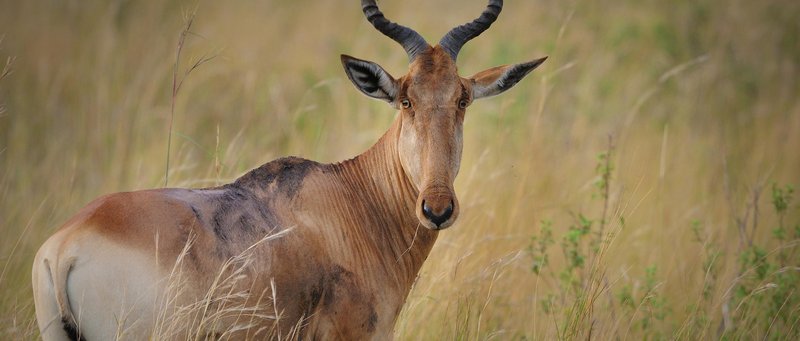
When we talk about the conservation status of the hartebeest, we’re not just discussing numbers; we’re diving headfirst into the heart of biodiversity and the delicate balance of ecosystems. Imagine a vibrant tapestry where each thread supports the other. Remove just one, and the whole design risks unraveling. This article will explore the current state of hartebeest populations, what drives their decline, and what global conservation efforts are underway to protect these stunning antelopes.
The Status of Hartebeest Populations
The hartebeest is classified into several subspecies, each adapted to specific habitats across Africa. However, the common thread among them is their vulnerability. Generally, the International Union for Conservation of Nature (IUCN) lists the hartebeest as a species of “Least Concern.” But hold on—this doesn’t mean they’re out of the woods. In some areas, like the western hartebeest, their numbers are dwindling alarmingly.
To paint a clearer picture, consider the population estimates. In some regions, the population can be as low as a few hundred individuals. Such figures can raise red flags for conservationists. You see, it’s not just about the total numbers. It’s about genetic diversity, habitat availability, and their overall ability to thrive in the wild. If these factors are compromised, even seemingly stable populations can face steep declines in a short time.
What Threatens the Hartebeest?
So, what’s causing these beautiful creatures to struggle? The main culprits are habitat loss and hunting. As human populations grow, we tend to expand our territories into wildlife habitats. This encroachment leads to fragmentation, which means that hartebeests find it harder to roam freely. They depend on large areas of grasslands, and when these are converted to agricultural land or developed for urban use, their survival becomes threatened.
Additionally, hunting plays a significant role in their decline. While regulated hunting can have some benefits, illegal poaching is a serious issue. In many regions, hartebeests are hunted for their meat and horns, which can lead to rapid population declines. Here’s the thing: when you remove even a few individuals from a small population, it can have dire consequences. Imagine a game of Jenga. Pull out the wrong piece, and the whole tower could come tumbling down.
Conservation Efforts and Their Importance
Conservation isn’t just a buzzword; it’s a necessity. Various organizations are working hard to protect the hartebeest and their habitats. Protected areas, like national parks and wildlife reserves, have been established to provide safe havens for these animals. For instance, some areas in East Africa focus on creating wildlife corridors that allow hartebeests to migrate freely and safely.
Moreover, community involvement is crucial. Engaging local communities in conservation efforts ensures that they understand the importance of protecting wildlife. When people see the benefits — like eco-tourism and sustainable land management — they’re more likely to support conservation initiatives. It’s a win-win situation. Picture this: a community that thrives economically while nurturing its local wildlife. It’s inspiring!
Global Perspectives on Hartebeest Conservation
Looking beyond local efforts, global perspectives play a massive role in wildlife conservation. International treaties and agreements can help protect species like the hartebeest from the threats of poaching and habitat destruction. These agreements, such as the Convention on International Trade in Endangered Species (CITES), regulate international trade and provide frameworks for protecting various species.
Moreover, awareness campaigns help raise the profile of endangered species. With the rise of social media, sharing stories about hartebeests can reach a broader audience. Conservationists and influencers join forces to educate the public about the challenges these animals face. Whenever someone shares a post about the hartebeest, it isn’t just a cute picture; it’s a step toward changing the narrative and fostering support for conservation efforts.
How Can You Help? Taking Action for Hartebeests
You might be wondering how you can get involved in conserving this unique species. It starts with small, conscious choices in your daily life. For instance, consider supporting organizations that focus on wildlife conservation. Donations, volunteering, or even spreading awareness on social media can amplify your impact. When you share a post or attend a fundraising event, you’re not just a spectator; you’re part of a larger movement.
Additionally, if you ever find yourself in Africa, consider choosing eco-tourism options. Visiting national parks with a focus on sustainable practices showcases your support for wildlife conservation. When tourists flock to these areas, it shows governments that wildlife is worth protecting. Remember, it’s not just about seeing the animals; it’s about ensuring they can thrive long after you’ve left.
As we wrap up our exploration of the hartebeest and its conservation status, it’s clear that these animals face many challenges. But with knowledge, community action, and global cooperation, there’s hope. The hartebeest isn’t just another antelope; it’s a vital part of its ecosystem. Keeping them around enriches our planet and preserves the stunning diversity of wildlife.
So, next time you come across a picture of a hartebeest or hear someone mention them, remember that each of us has a role to play. Whether through conservation efforts, spreading awareness, or simply appreciating their beauty, we can contribute to ensuring that these magnificent creatures continue to roam the grasslands of Africa for generations to come. Let’s make sure their story doesn’t end here.
